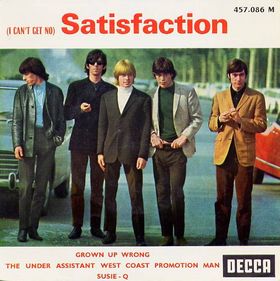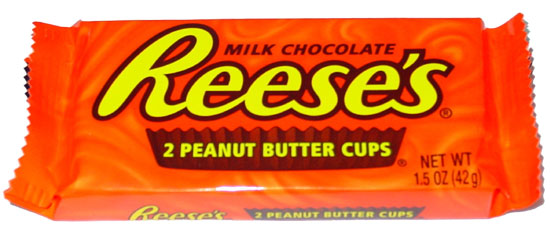Search Engine Optimization (SEO) and User Experience (UX) are not at odds with each other. Done correctly, SEO and UX should be complimentary.

Here’s why SEO and UX are like chocolate and peanut butter.
Intent
SEO is, when you get down to it, about meeting query intent. This goes well beyond the traditional breakdown between informational, transactional and navigational search.
Keyword research is performed not to just identify the keywords and modifiers with the largest search volume, but to understand the syntax and intent of users in that vertical. We’re looking for patterns and want to understand how and why people are searching on specific terms. Maybe you’d prefer to call them user stories?
For instance, why might someone search for a product manual? Is it to get specifications for that product or because they’re having a problem with the product? SEO seeks to understand intent to best satisfy that query.
Satisfaction

Google is intensely interested in measuring user satisfaction. They measure pogosticking behavior, track long clicks versus short clicks and in some instances can analyze click-stream behavior. No, Google is not peeking at your Google Analytics data. They have other ways of obtaining this information.
The result is that an SEO will not want pages with an unnaturally high bounce rate or sessions with a very low time on site. We might not talk about delighting the user (I’ve heard just about enough of that) but we care about user satisfaction.
Really, it goes way beyond the metrics above. A savvy SEO knows that user satisfaction leads to more word-of-mouth, more social mentions and more links.
Readability
I’ve been very critical about how people write and format content for the web. It’s not just about having the right content, it’s about making it accessible and easy to read.
We’ll want to see proper font hierarchy, though many might talk about it as header optimization. Our obsession about keyword frequency is rooted in the knowledge that people crave consistency and repetition as a way to understand content.
SEO wants a person visiting a page to instantly understand what it is about. Take my five foot web design philosophy as an example, or try the five second test and similar tools. We know that what is retained by a user is likely what will be retained by a search engine.
Conversion
Traffic does nothing in and of itself. Don’t hire an SEO is they’re simply concerned about driving traffic. There’s no need to get saucer eyes about that big pool of traffic you could optimize for but would actually do nothing for your business. (If that were the case we’d simply use ‘boobs’ as a modifier for all terms.)
I suppose if you’re running an ad supported model it matters, but at the end of the day the best traffic is traffic that converts. You register a new user or you make a sale. When you do this it means you likely have a better way to connect with these people in the future.
SEO is, largely, an acquisition channel. A rising rate of repeat visits through natural search should make an SEO uneasy. Poor conversion might point to low satisfaction, to not matching query intent or to not being relevant.
Relevance

Google wants to return pages that are most relevant to a query.
Yet, too often sites want to throw the kitchen sink at someone when they land on a page. If I search and find your site about programmable coffee makers you should put associated links and content about coffee makers, coffee and maybe coffee cups. Don’t put content and links to lawn mowers, refrigerators, and sofas on the same page.
SEO wants focus! We want to create topic neighborhoods. It may come out as discussions about anchor text, the number of links on a page, cross linking strategies and references to page rank, but we’re really talking about relevance.
Everything they want, nothing they don’t.
Navigation
We care about how users get from one point to another. We’re mapping the information architecture (IA) of a site. We think about how many links are really necessary on the page. We’re thinking about breadcrumbs. We’ll have an opinion on drop down and mega menus. (I generally don’t like them.)
We’re analyzing how easy it is to get from the home page to any other page on the site. That’s important for users as well as search engines.
We want navigation to enforce and enhance relevance.
Social
Today, SEO is also about being social. The deteriorating link graph is augmented by social authority. Whether this is straight up brand mentions or links, both primary (acknowledged by Google and Bing to be a ranking factor) and secondary (the links generated as a result of social chatter), an SEO is going to ask how the content or product is going to be shared and distributed.
Trust and authority is earned through social evangelism.
SEO and UX

Is what I describe that different than UX? Do any of these things sound like they’d be bad for your business?
Instead, I challenge organizations to think of SEO not as a necessary evil, not as something you trade-off against better user experience, but instead look at SEO as an ally to creating better user experience.
The Next Post: Facebook Comments and SEO
The Previous Post: Farmer Update About Sites Not Content

5 trackbacks/pingbacks
Comments About SEO and UX
// 2 comments so far.
Micah // March 08th 2011
I’ve never thought of SEO as an evil – it often highlights how people think about a company’s products or services. For instance, companies often want to group things by internal product lines that are never used in searches. SEO helps highlight this and encourages the site to be organized according to the user’s language. SEO often makes this kind of change an easier sell than just UX reasoning alone.
Where I sometimes bump into issues between UX and SEO is when long tail terms or synonyms are targeted. For example, if an artificial turf company wants to rank well for “artificial turf”, “synthetic turf”, and “astro turf” terms, those phrases need to have content on the site, but those terms all describe the same stuff. From a UX (and branding) perspective I’d rather be consistent with the phrasing. These kinds of SEO needs can make it difficult to avoid content that feels out of place or duplicated. Targeting long tail terms can sometimes lead to content that never would have been considered from just a user perspective.
Those SEO goals for long tail terms and synonyms are still important and worthy, but it may require a little compromise in the end. Like you said, if we keep our eye on conversions we are likely to find the right balance.
Dave // August 06th 2011
At this point, I have an automatic distrust of widely shared content because it’s far to easy to game the social media results.
I suspect at some point, search engines incorporate gaming signals into the algorithms, just as reciprocal linking has been incorporated. That won’t bode well for people relying on automated social media promotion and quid pro quo relationships with like minded marketers. Which is fine by me.
My disgust with this has reached a point where I have removed all social media linking from my websites.
Sorry, comments for this entry are closed at this time.
You can follow any responses to this entry via its RSS comments feed.